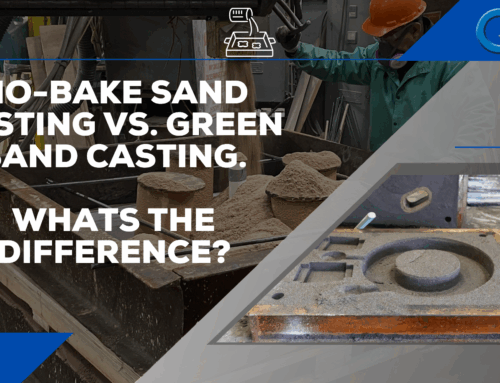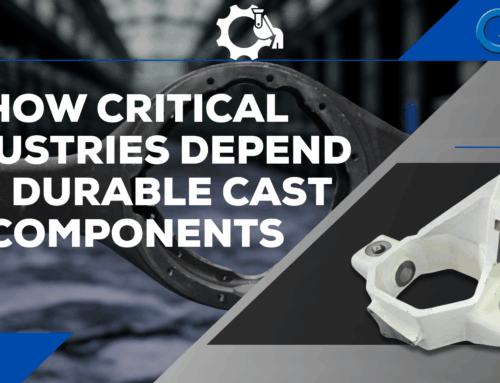 History of Metal Casting Patterns
History of Metal Casting Patterns
Before we discuss patterns in the casting process, a little history. The foundry industry dates back to early biblical times, (it is believed some 4,000 years BC) where they would pour castings out of gold, and then later copper, bronze, and tin.
One would assume that the casting images needed a pattern and in the early days the “pattern” was usually carved into an open stone or sand molds. More sophisticated.
Today’s modern foundries are not too far from the original metal casters. One difference, however, is that we now have many different ways to create the mold, and processes to melt and form the object.
Modern Techniques and Materials in Pattern Making
Our foundry specializes in the no-bake sand casting process where the role of a well-crafted pattern is crucial. Depending on the complexity and the volume of production, our patterns are crafted from a range of materials including sugar pine for its workability, or hardwoods like mahogany and maple for increased durability. For high-volume or high-precision applications, metal or durable plastic patterns are preferred to ensure consistent quality over many cycles of casting. The sophistication in our pattern making extends to the use of foam patterns for short-run projects where cost efficiency is paramount. Each pattern is rigorously tested and adjusted for dimensional accuracy and optimal casting conditions, ensuring that each final product not only meets but exceeds our stringent quality standards.
Innovations in Patterns for Casting
Throughout the history of metal casting, the development of patterns for casting has been instrumental in advancing the precision and efficiency of this age-old process. At Quaker City Castings, we embrace both traditional and innovative methods to design patterns that accurately reflect the intended design of the final cast product. By integrating modern technologies such as 3D modeling and advanced materials into our pattern making, we ensure each pattern is optimized for the no-bake sand casting process, which is particularly advantageous for complex and detailed iron and steel castings.
Today, we will focus on the patterns for the sand method of molding, particularly the no-bake process that Quaker City Castings employs.
In order to create a casting, a pattern needs to be constructed that is an exact replica of the form that is wanted. In our application we use a few different materials when constructing the pattern and corresponding core boxes. The most widely used material is wood, generally sugar pine. Depending on the rate of usage of the pattern, harder woods can be used to allow for greater wearability, usually hard woods such as mahogany, maple, or the softer hardwood of poplar. In some cases, a metal or plastic pattern will be constructed to assure a long lifespan and the ability to hold tighter casting tolerances. On the rare occasion we will make the pattern out of foam that lasts only for one or two molds. The foam material is used to keep pattern costs to a minimum, when the cost of a permanent mold cannot be justified.
 Once the pattern is constructed and delivered to the foundry, our in-house pattern shop will do a dimensional check to assure it meets the blue print specifications, and then gate and rig the equipment to fit one of our three molding lines. Along the way, many decisions must be made: what line does it fit, how many, if any, cores will be needed, what material is the metal to be cast so that the proper shrink factor can be used when constructing the equipment, and the degree of verifying and testing that might be requested after the casting is produced.
Once the pattern is constructed and delivered to the foundry, our in-house pattern shop will do a dimensional check to assure it meets the blue print specifications, and then gate and rig the equipment to fit one of our three molding lines. Along the way, many decisions must be made: what line does it fit, how many, if any, cores will be needed, what material is the metal to be cast so that the proper shrink factor can be used when constructing the equipment, and the degree of verifying and testing that might be requested after the casting is produced.
If the casting is not correct according to the drawing, or 3D model, the pattern maker is held responsible. Dimensional accuracy, construction, and expense are goals that we look for from the pattern shop.
The pattern is a vital leg of the foundry operation to help insure the production of a quality casting that is sound and visually acceptable. If the pattern equipment is rough and poorly constructed, the casting will have little to no chance in meeting our in-house and customer quality standards. The pattern makers we work with have a very high degree of foundry knowledge in both engineering and foundry practice.
Refining the Art of Pattern Making
Our commitment to quality and precision in creating patterns for casting is evident in every step of our manufacturing process. From selecting the appropriate materials like sugar pine, mahogany, or high-tech foams to the meticulous crafting and testing of each pattern, we aim to produce castings that meet the highest standards of dimensional accuracy and aesthetic quality. This attention to detail extends to the assembly and gating of molds in our foundry, ensuring that every casting achieves the structural integrity and surface finish required by our clients. By continually refining our techniques and materials, we uphold the art and science of pattern making that is central to the success of our foundry operations.
The purchasing of the pattern equipment is always a necessary evil for the customer. So, it is one of our major duties to make sure the equipment that we supply addresses all of the customer’s requirements while giving them a world-class product at a competitive price, delivered on time.






Leave A Comment